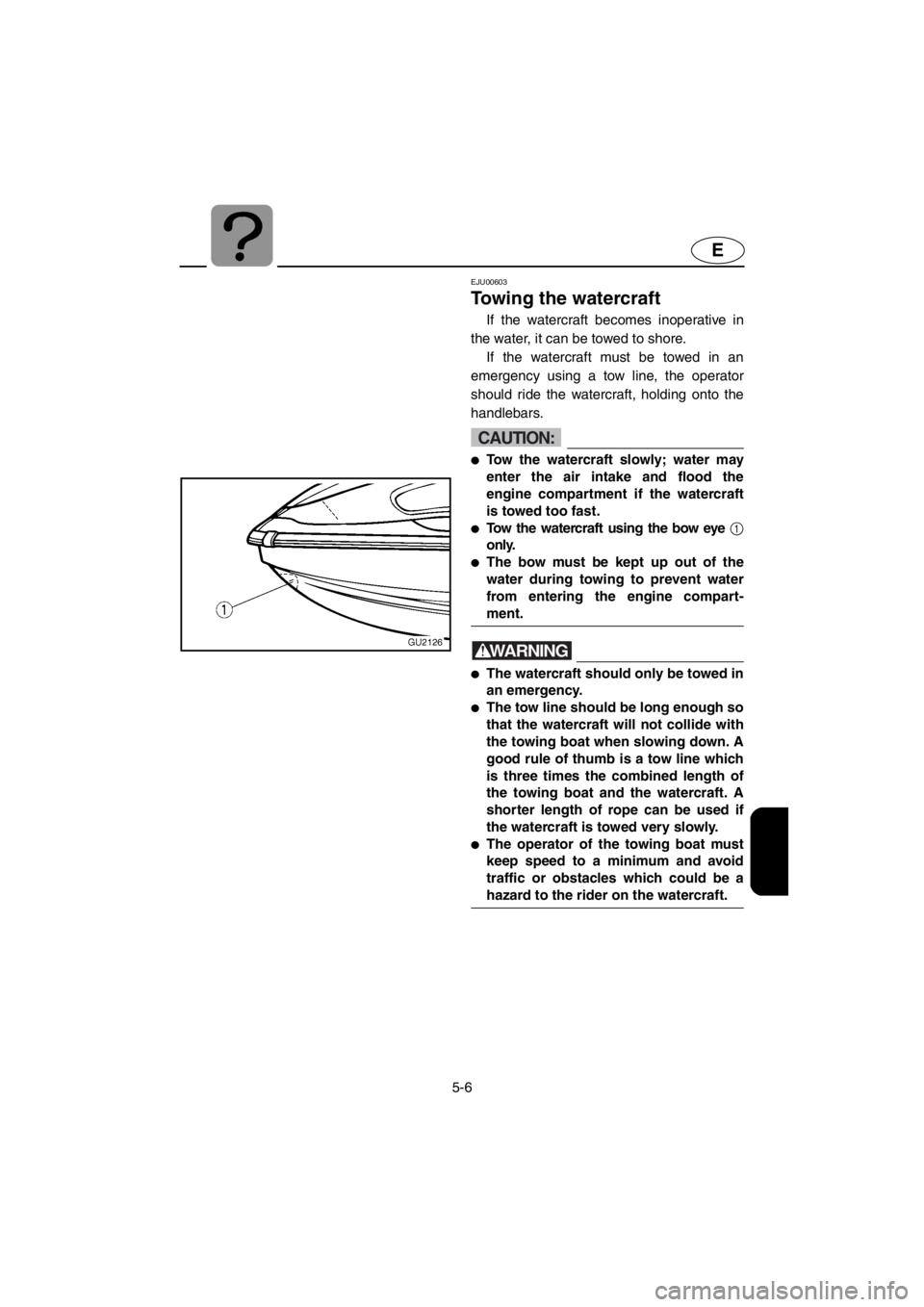Page 26 of 111
2-1
E
EJU00327
Location of main components
1Cooling water pilot outlet
Use to verify cooling water flow.
2Bow eye
Use to attach rope for transporting, mooring or
towing the watercraft in an emergency.
3Front storage compartment
4Hood
5Fuel cock knob
Use to select either normal or reserve fuel flow
from the fuel tank to the carburetors, or to shut
off fuel flow.
6Handlebars
Use to control direction.
7Fuel tank filler cap
8Rope hole
Use to attach a rope for mooring only.
9Oil tank filler cap
0Choke knob
Use to start a cold engine.AFootwell
Use to place feet for balance.
BFootrest
CFire extinguisher container
Use to store the fire extinguisher.
DIntake grate
Prevents debris from getting into the jet pump.
EHandgrip
Use for suppor t when boarding the watercraft
or when seated facing rearward and acting as
a spotter for a water-skier.
FRear seat
GFront seat
HGlove compartment
ISeat storage compartments
E_F0M-72-2.fm Page 1 Thursday, July 27, 2000 9:50 AM
Page 27 of 111
2-2
E
1Engine shut-off cord (lanyard)
Attach to wrist so that the engine stops if the
operator falls off the watercraft.
2Engine stop switch
Push to stop the engine normally.
3Clip
Insert into the engine shut-off switch to enable
starting of the engine.
Remove to stop the engine or prevent acci-
dental star ting of the engine or unauthorized
use of the watercraft.
4Engine shut-off switch
Remove the clip to stop the engine and dis-
able it from starting.
5Start switch
Push to start the engine.6Oil level warning lamp
7Throttle lever
Use to accelerate and decelerate.
8Stern drain plugs
Use to drain water in the bilge when the water-
craft is on dry land.
9Jet thrust nozzle
Changes the direction of jet thrust according
to handlebar position.
0Cleat
Use to attach a towrope for pulling water-skier
or a rope mooring the watercraft.
ARide plate
E_F0M-72-2.fm Page 2 Thursday, July 27, 2000 9:50 AM
Page 103 of 111

5-6
E
EJU00603
Towing the watercraft
If the watercraft becomes inoperative in
the water, it can be towed to shore.
If the watercraft must be towed in an
emergency using a tow line, the operator
should ride the watercraft, holding onto the
handlebars.
CAUTION:
●Tow the watercraft slowly; water may
enter the air intake and flood the
engine compartment if the watercraft
is towed too fast.
●Tow the watercraft using the bow eye 1
only.
●The bow must be kept up out of the
water during towing to prevent water
from entering the engine compart-
ment.
WARNING
●The watercraft should only be towed in
an emergency.
●The tow line should be long enough so
that the watercraft will not collide with
the towing boat when slowing down. A
good rule of thumb is a tow line which
is three times the combined length of
the towing boat and the watercraft. A
shorter length of rope can be used if
the watercraft is towed very slowly.
●The operator of the towing boat must
keep speed to a minimum and avoid
traffic or obstacles which could be a
hazard to the rider on the watercraft.
E_F0M-72-5.fm Page 6 Thursday, July 27, 2000 9:58 AM